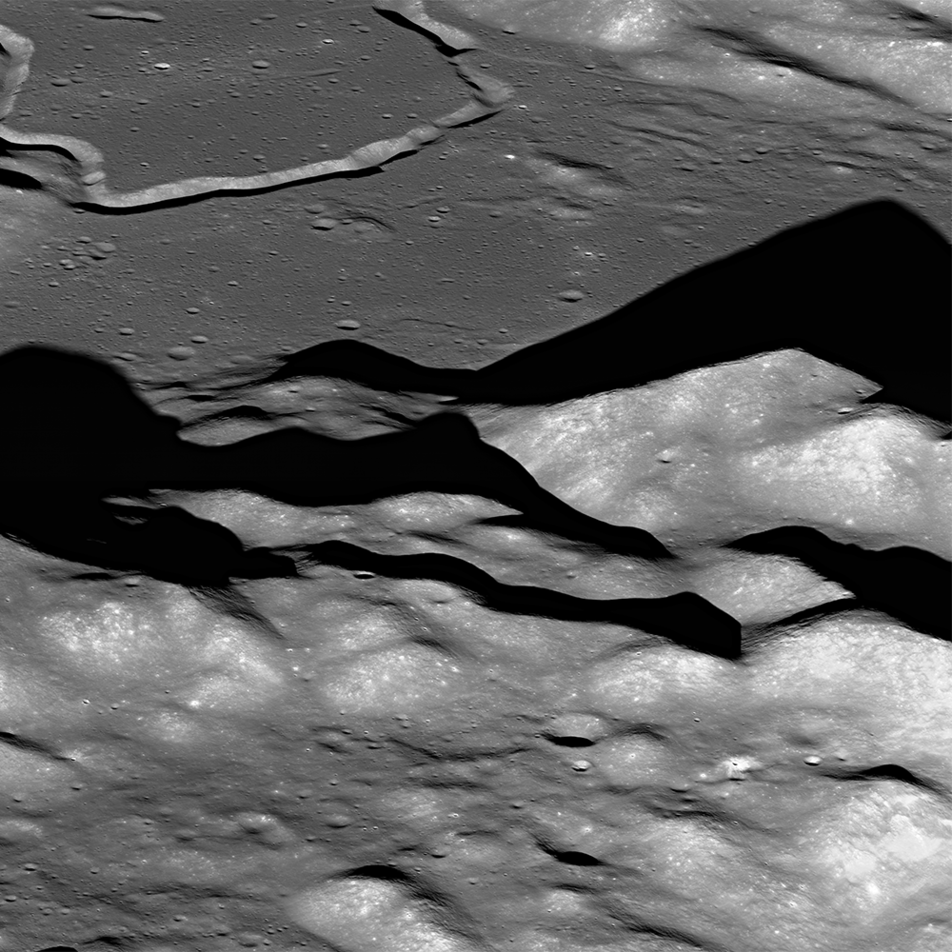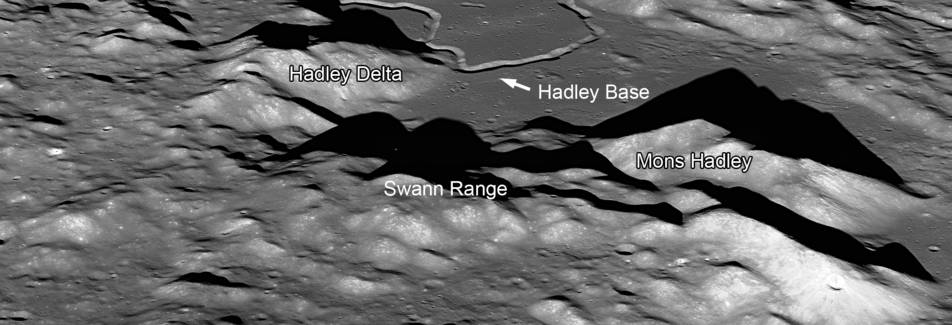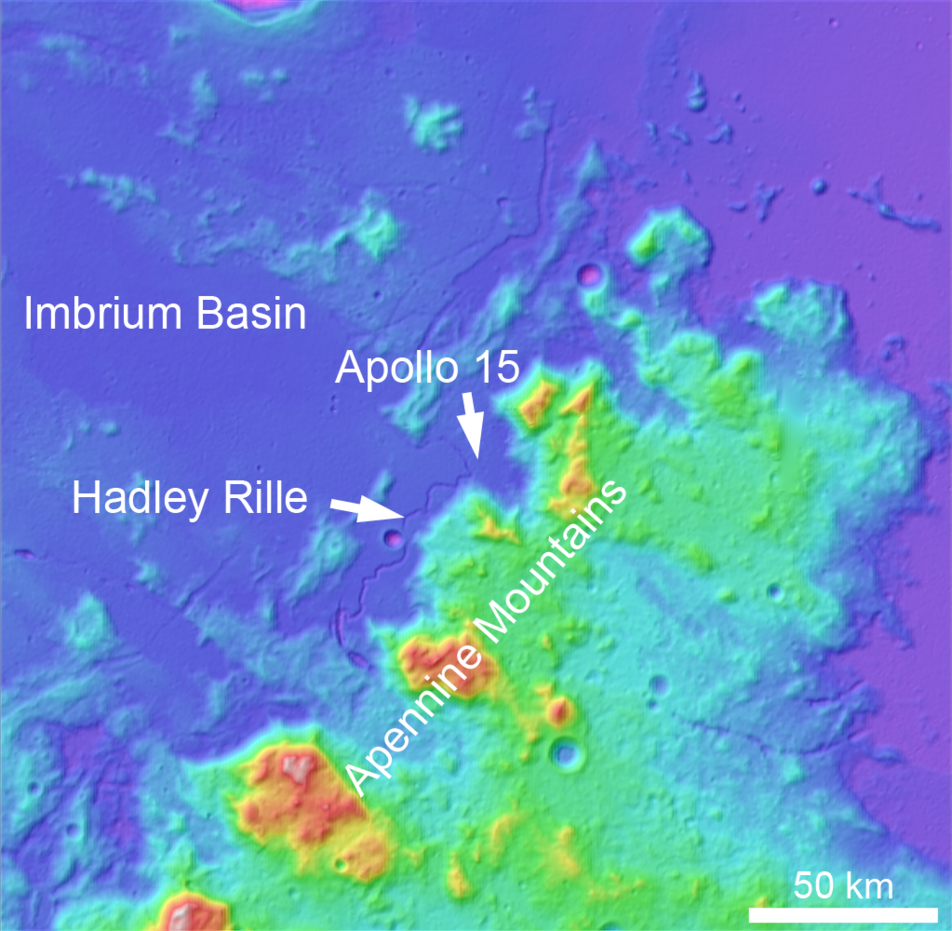
Apollo mission planners selected an adventurous landing site for Apollo 15 located on a relatively small patch of lava plains (mare). This site is nestled between the towering Apennine mountains to the east, attaining heights of 3-5 km (~10,000-16,000 ft), and the 200-m deep v-shaped valley (~650 ft) of Hadley Rille to the west.

The experience gained from the successful landings of the preceding Apollo missions afforded mission controllers confidence that a landing descending through a mountain range was possible, though it required a steeper descent angle (25° rather than 14°). A captioned video of the descent of Apollo 15 conveys the excitement of astronauts David Scott and James Irwin as they set down near Hadley Rille. The Hadley Rille landing site also presented an opportunity to test the capabilities of the new lunar roving vehicle (LRV).

The Apennine Mountain Range formed during the Imbrium basin-forming event, and it was hoped these mountains contained materials from very early in the Moon's history (which they did!). As astronauts Irwin and Scott descended over the Apennines, they reported a floating sensation that resulted from glimpsing mountain peaks passing by the windows of the Lunar Module (LM). The descent was a complete success, and the LM set down near the planned site! Although, the astronauts were a little surprised to land with one foot-pad in a small crater, placing the vehicle on a slant.

Three EVAs (or traverses) were planned for Apollo 15 using the LRV, two of which allowed sampling part of the Apennine Mountain Range to the south and southeast and required long (multi-kilometer) traverses. Stay tuned for more about the Apollo 15 exploration of the Hadley-Apennine region later this week! Astronauts Scott and Irwin were accomplished field geologists; listen as Commander Scott recently reflected on his Apollo 15 experience, including the importance of field-geology training.
Explore the full NAC oblique below by panning and zooming. The tiny arrow marks the location of the LM.
Related Posts:
Hadley-Apennine: the Apollo 15 Landing Site
Retracing the Steps of Apollo 15: Constellation Region of Interest
The Mighty Apennine Mountain Range
LROC’s First Look at the Apollo Landing Sites
The Apollo 15 Lunar Laser Ranging Retroreflector - A Fundamental Point on the Moon!
Layers near Apollo 15 Landing Site
LROC Explores Apollo 15 (YouTube Video)
Hadley Rille and the Mountains of the Moon
Published by J. Stopar on 18 June 2014